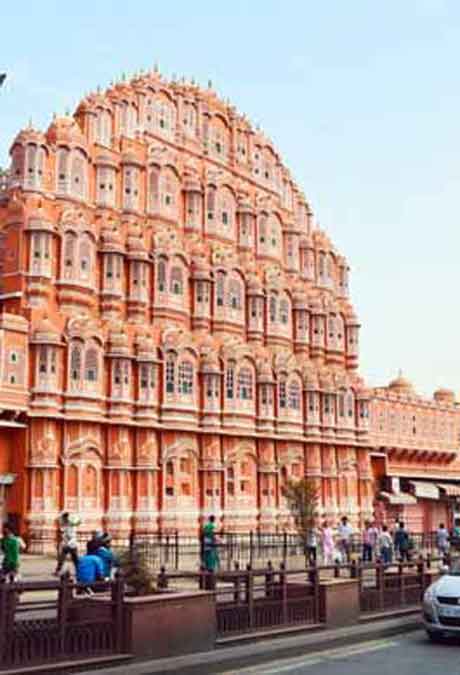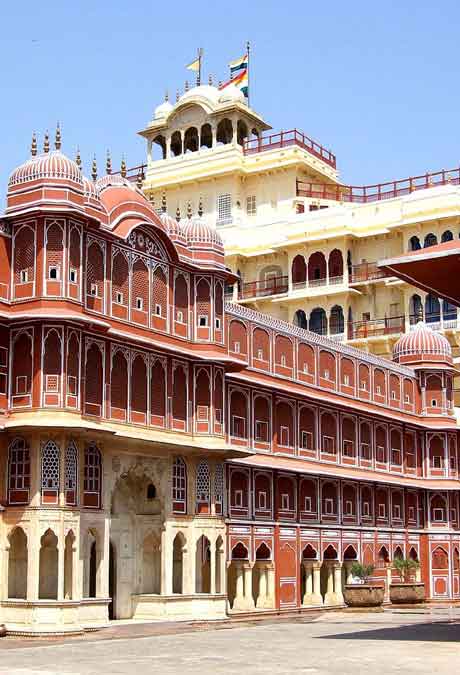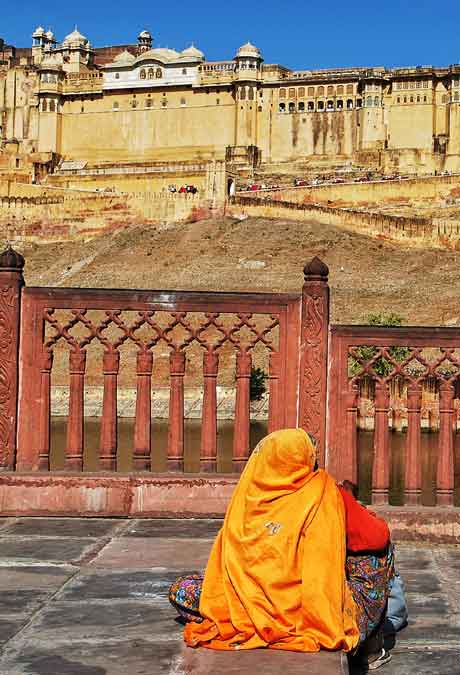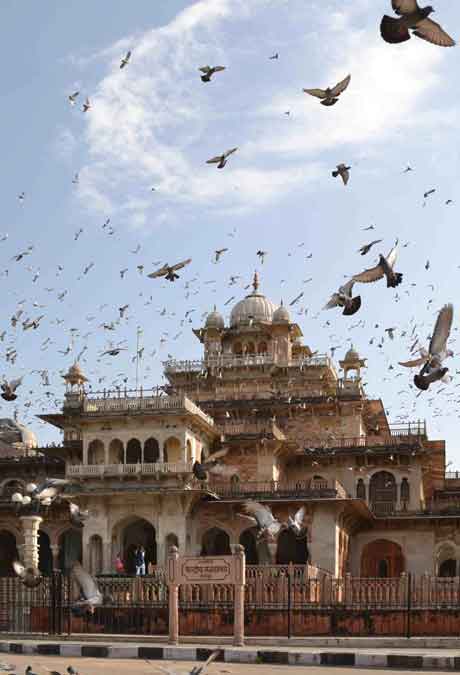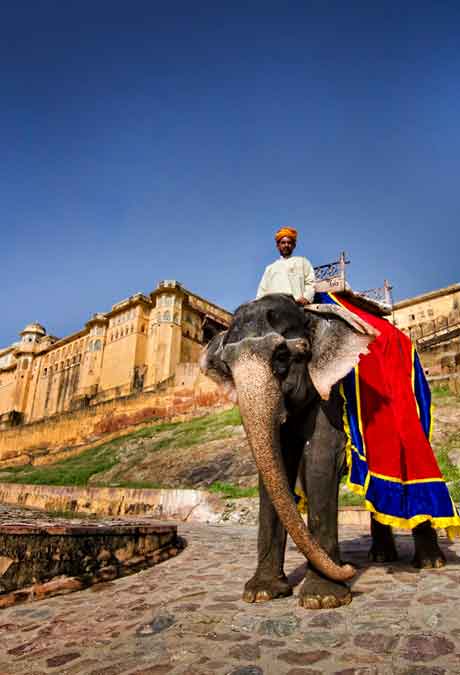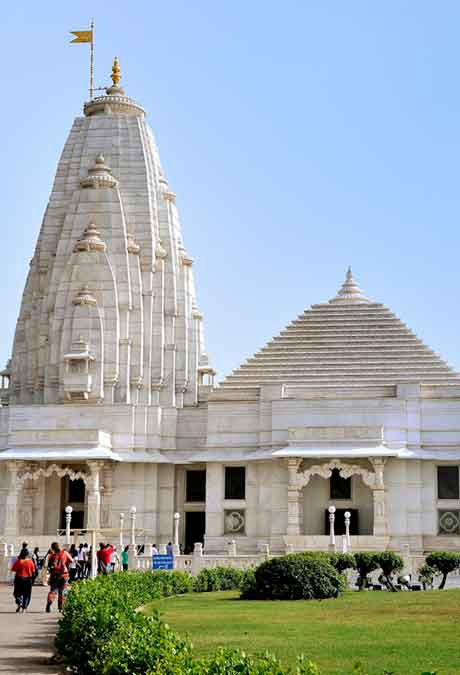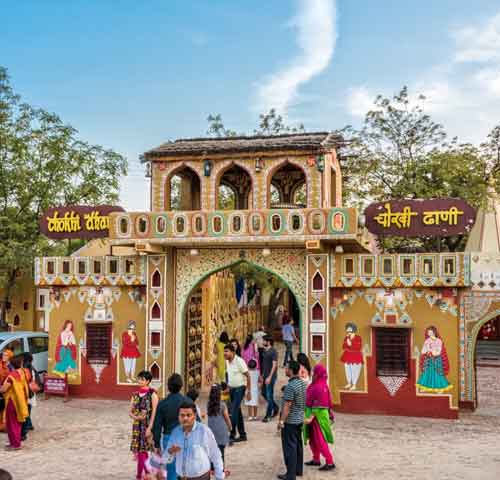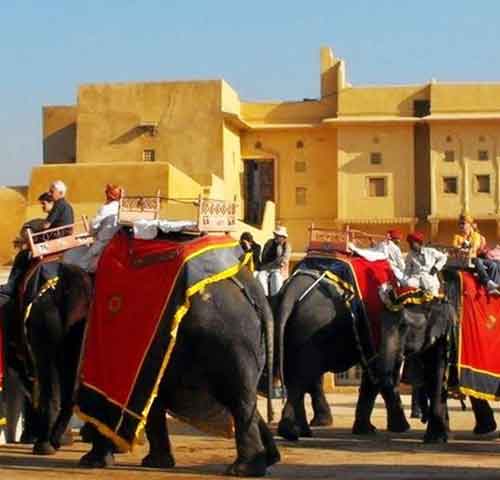Jaipur Tour Itinerary
Rajasthan's beautiful Pink City Jaipur, was the stronghold of a clan of rulers whose three hill forts and series of palaces in the city areimportant attractions. Known as the Pink City because of the colour of the stone used exclusively in the walled city, Jaipur's bazaars sell embroidered leather shoes, blue pottery, tie and dye scarves and other exotic wares. Western Rajasthan itself forms a convenient circuit, in the heart of the Thar desert which has shaped its history, lifestyles and architecture.
Founded in AD 1727 by Sawai Jaisingh II, Jaipur the capital of Rajasthan is popularly known as the Pink City with broad avenues and spacious gardens. The capital of Rajasthan, Jaipur is steeped in history and culture. Here the past comes alive in magnificent forts and palaces, blushed pink, where once lived the maharajas. The bustling bazaars of Jaipur, famous for Rajasthani jewellery, fabric and shoes, possess a timeless quality and are surely a treasure-trove for the shoppers. This fascinating city with its romantic charm takes you to an epoch of royalty and tradition.
Jaipur Attractions
Amber Palace
Amber, located about 11 kilometres from Jaipur, sits amidst picturesque and rugged hills. It incorporates both Rajput and Mughal architecture. Constructed by Raja Man Singh I in the late 16th century and completed by Mirja Raja Jai Singh, the fort is made of red sandstone and white marble.
Jaipur City Palace
The City Palace is a splendid example of the foresight that Maharaja Sawai Jai Singh II had. As the founder of Jaipur, he took pains to create a magnificent walled city that encloses marvels such as the City Palace. The palace is a beautiful blend of Mughal and Rajput styles of architecture. The previous royal family continues to reside in one section of the palace. Located within the walls of the City Palace, Chandra Mahal is a seven-storeyed tower. However, the ground and first floors have now been given over for the Maharaja Sawai Man Singh II Museum.
Jantar Mantar
The Jantar Mantar in Jaipur is considered to be the largest of the five astronomical observatories built by Maharaja Sawai Jai Singh II, the founder of Jaipur. It contains fourteen geometric devices, designed to measure time, track celestial bodies and observe the orbits of the planets around the sun.
Hawa Mahal
The Palace of Winds was constructed in 1799 by the poet-king Sawai Pratap Singh. The five-storied structure is made of pink sandstone and has 356 intricately carved jharokhas (windows). It was designed for the women of the royal family to sit in privacy while observing life on the street.
Albert Hall Museum
The building gets its name from The Victoria and Albert Museum in London, the inspiration for its design. The exquisitely built Albert Hall is housed in the centre of Ram Niwas Garden. Sir Swinton Jacob (who is also the mastermind behind many other palaces in Rajasthan) conceptualised and designed it using styles from the Indo-Sarcenic architecture and the Prince of Wales laid the foundation stone of the building in 1876. The museum displays a wide range of metal objects, wood crafts, carpets, stone and metal sculptures, arms and weapons, natural stones and ivory goods. It also houses a large collection of miniatures from Bundi, Kota, Kishangarh, Udaipur and Jaipur schools of art.
Nahargarh Fort
The northern frontier of Jaipur is fortified by Nahargarh Fort. Situated on a rough crest of the Aravalli range, the fort, which literally means ‘abode of the tigers’, was built in 1734 by Jai Singh to further defend Amber. Later, in 1868, the fort was extended to its present size.
Jaigarh Fort
Of the three hilltop forts that overlook the city of Jaipur, Jaigarh is perhaps the most magnificent of them all. About 15 kilometres from Jaipur, it was built by Sawai Jai Singh II sometime in the early 18th century amidst the arid, rocky and thorn-scrub covered hills. Despite its ancient construction, it still retains most of its imposing citadel appearance. Visitors can see the world’s largest canon – Jaiban, at the fort.
Lakshmi Narayan Temple
The Lakshmi-Narayan Temple, also known as the Birla Temple, is a comparatively newer temple built by the Birlas (a noted industrialist family). The temple, constructed entirely of white marble, is home to the deities of Vishnu and his consort Lakshmi.
Jal Mahal
One of the most wonderful sights in Jaipur is the beautiful Jal Mahal or Lake Palace. The light, sand coloured stone walls and the deep blue of the water make for a wonderful contrast. The palace appears to float in the centre of Man Sagar Lake, where its magnificent exteriors can be enjoyed by tourists.
Central Park
Central Park is a large green zone right in the centre of Jaipur that offers city dwellers a spot for a moment of respite. Conceptualised and built by the Jaipur Development Authority, it is Jaipur’s largest park. It houses a lush garden, the Polo Ground and a golf club. However, the highlight of the park is India’s first all-day-and-all-night monumental National Flag which also happens to be the country’s tallest flagpole.
Govind Devji Temple
The Krishna temple is a rare spire-less temple and houses the idol of Govind Devji that Sawai Jai Singh brought from Vrindavan. The deity, worshipped by the erstwhile royal family, is also revered by the Hindus in Jaipur and nearby areas.
Moti Doongri
Rising from the middle of Jaipur is a small pearl-shaped hill called Moti Doongri. At the top of the hill sits an exotic palace – a replica of a Scottish castle – which is the private property of the royal family. The highlight of Moti Doongri is a famous and auspicious temple of Lord Ganesh located at the foothill.
Galtaji
Galtaji is an ancient pilgrimage centre in Jaipur. Set amidst low hills and packed with locals and tourists alike, the attractive spot has temples, pavilions and holy kunds (natural springs and water tanks). Visitors to Galtaji will come across the complex of Ramgopalji temple, locally called the Monkey temple (Galwar Bagh). It gets this moniker because of a large group of resident monkeys. The green landscape and chattering monkeys add to the delight of the area. On top of the hill is a small temple dedicated to the sun god, called the Surya Mandir. Constructed by Diwan Kriparam, the temple can be seen from anywhere in the city.
How to Reach here
Air : Indian Airlines connect Jaipur with Delhi, Jodhpur, Udaipur, Aurangabad, Bombay, Varanasi, Calcutta, Ahmedabad.
Rail : Jaipur is connected by rail with Delhi, Agra, Ahmedabad, Ajmer, Abu Road (Mount Abu), Udaipur, Bombay and Sawai Madhopur.
Road : Good motorable roads connect Jaipur with Delhi 258 km, Agra 236 km, Bikaner 321 km, Udaipur 405 km, Ajmer 131 km, Jodhpur 316 km, Bharatpur 176 km, Jaisalmer 638 km and Mumbai 1202 km
